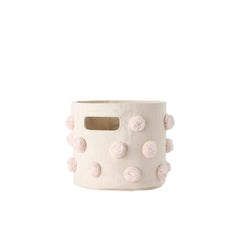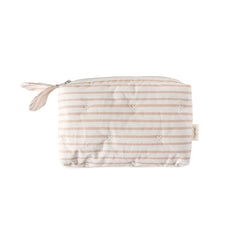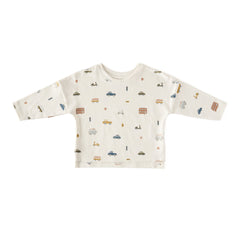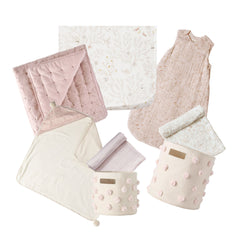Protecting your little one from hot weather is important no matter where or when, even with quick errands on cloudy days. Dressing them accordingly for both sunshine and summer sleep can protect them from UV rays and heat. From choosing the best sunscreen for babies to navigating outdoor play this summer, here’s everything you need to know about baby sun safety.
Top 10 Tips for Sun Safety
Since little ones can overheat quickly on hot days, keeping babies and toddlers cool in the summertime helps prevent sunburn, heat rash and sun stroke. According to the American Academy of Dermatology, sunscreen isn’t recommended for babies younger than 6 months. If the sun can’t be avoided, keep babies this age out of direct sunlight and only apply a thin layer of sunscreen to the face, back of hands and tops of feet. For littles older than 6 months, always use mineral sunscreen with at least SPF 30 and re-apply to all areas of skin throughout the day (don’t forget the ears and neck!).
When you’re dreaming up plans for what to do as a family this weekend, remember to pack all the essentials to keep your little ones comfy, cool and safe in the sun.
Read on for our top 10 tips about how to practice sun safety this season:
- Use mineral sunscreen. Choose an SPF 30+ mineral sunscreen that is broad spectrum, so it protects from both UVA and UVB rays. Mineral sunscreen creates a physical block with either zinc oxide or titanium dioxide and is the best option for babies and toddlers older than 6 months since it sits on the surface of the skin, is chemical-free and starts working immediately. Re-apply zinc sunscreen or mineral sunscreen to all areas of exposed skin every 2 hours or after swimming.
- Check the sunscreen’s expiration date. You may still have one kicking around from a few years back, but always double check with mineral sunscreen. If it doesn’t have one, it can go. Same if it’s older than 3 years or was exposed to high temperatures (like being left in a hot car).
- Check the UV Index. The sun’s UV rays can be harmful in every season, even on cooler days, and they reflect off of water, sand and snow. Practice baby sun safety by limiting time outdoors if the UV index in your area is above 3.
- Keep them hydrated. If you’re breastfeeding or bottle feeding, bring everything you need like a nursing cover up, swaddles or bottles. If your little one is older than 6 months and can drink water from a cup, encourage them to hydrate.
- Create shade wherever you are. Pick up a collapsible sun tent or travel umbrella to use in the backyard or at the beach, or keep a play mat on hand for sitting under a tree in the park. A swaddle can also be used to drape over your stroller for shade, just be mindful of airflow as heavier styles can trap heat!
- Avoid peak sun on hot days. Get outside with your little one in the early morning hours or the evening when the sun dips low. Generally the sun peaks between 10am and 4pm, so an 8am walk before breakfast or a 5pm playdate at the park are safe bets. These are just a few examples of how to protect their delicate skin from the sun’s strongest rays.
- Cool off at the pool or splash pad. Little ones love water play so embrace it! Simple pleasures like running through the sprinkler, playing with a water table or sitting in an inflatable pool are great ways to keep their core temperature cool.
- Choose sun-protective clothing. Lightweight, woven outfits in organic cotton offer airy fabrics that will breathe on warm days. Long sleeves pants add another layer of baby sun safety if you want to keep arms and legs covered, and bucket hats with broad rims keep the sun off your little’s face and neck!
- Bring a couple pairs of sunglasses. Not only do shades look adorable on babies and toddlers, they protect your little one's eyes! Just make sure they block both UVA and UVB rays. We recommend keeping a back-up pair in your diaper bag since it’s easy for little (or grown-up!) hands to drop them on the playground.
-
Watch for any signs of heat-related illness. Heat rash can progress to heat exhaustion or heat stroke, which can be serious. To practice mindful sun safety, keep applying sunscreen for babies throughout the day and stay in the shade where possible. If your little one’s skin looks red or they develop a rash, or if they can’t seem to settle, take them indoors to cool down. Try using a cold cloth, ice packs or water and consult your healthcare provider.
Takeaways
Zinc sunscreen or mineral sunscreen is key to practicing sun safety, but sunscreen for babies is just one piece of the puzzle. Always monitor the environment, choose to go outdoors when the UV index is low, where shady areas are available and when you can be close to water for time to cool down. We hope these tips for baby sun safety inspire you to get out and enjoy the beautiful weather this season!








